Financial Analysis of Juicy Burger: Business Finance Report 2019
VerifiedAdded on 2022/09/29
|7
|780
|25
Report
AI Summary
This report presents a comprehensive financial analysis of "Juicy Burger," a new start-up business venture. It includes a detailed examination of the company's financial projections, income statement, balance sheet, and cash flow statement. The analysis covers key aspects such as revenue projections based on market penetration, cost of goods sold, operational expenses (rent, salaries, marketing, etc.), and initial capital requirements. The income statement projects a revenue of $50 million in the first year, with an operating profit of $8.67 million and a return on investment of 28.89%. The balance sheet outlines the initial investment of $40 million, financed by equity and debt. The report provides a clear understanding of the financial strategies, performance and the future prospects of the business.
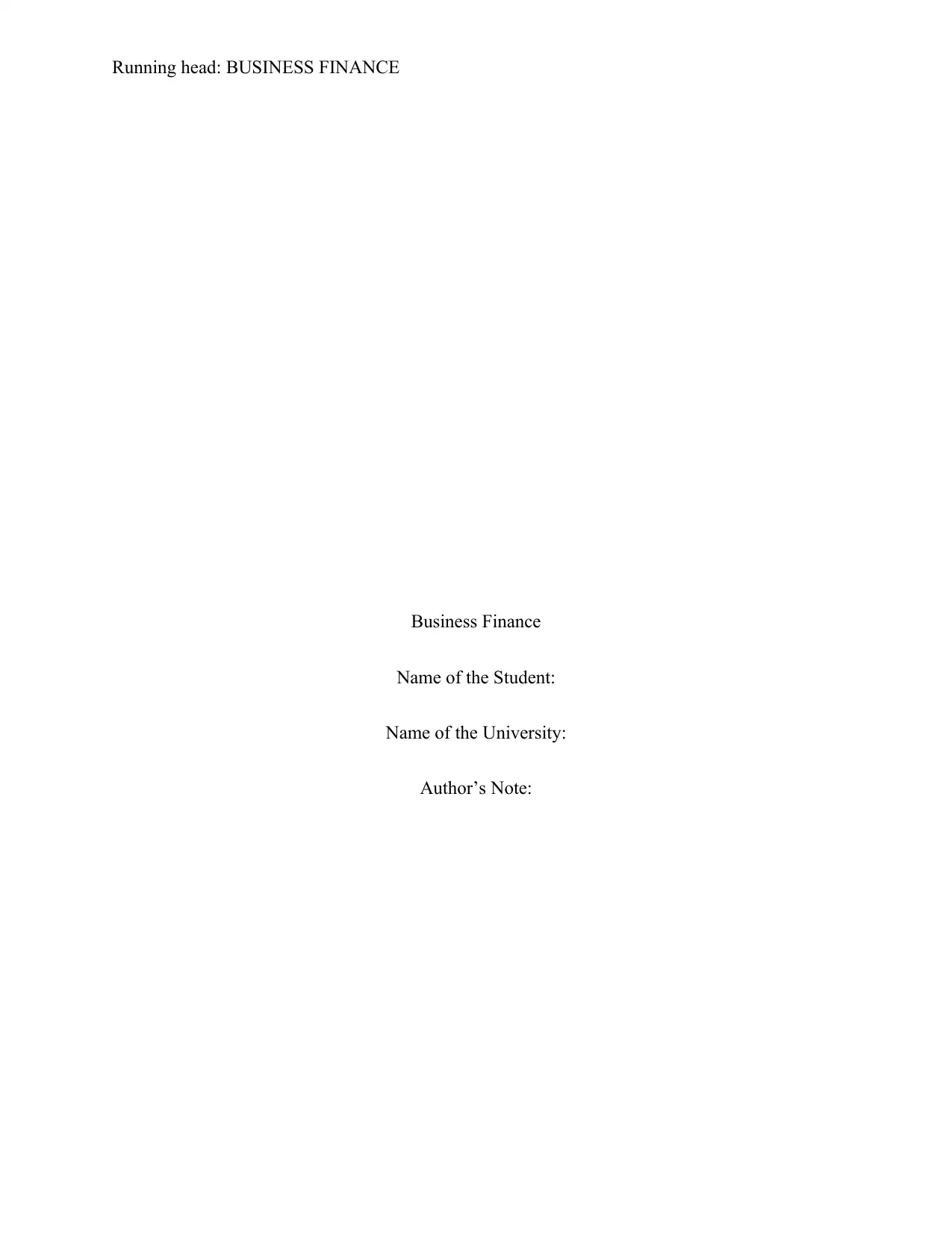
Running head: BUSINESS FINANCE
Business Finance
Name of the Student:
Name of the University:
Author’s Note:
Business Finance
Name of the Student:
Name of the University:
Author’s Note:
Paraphrase This Document
Need a fresh take? Get an instant paraphrase of this document with our AI Paraphraser
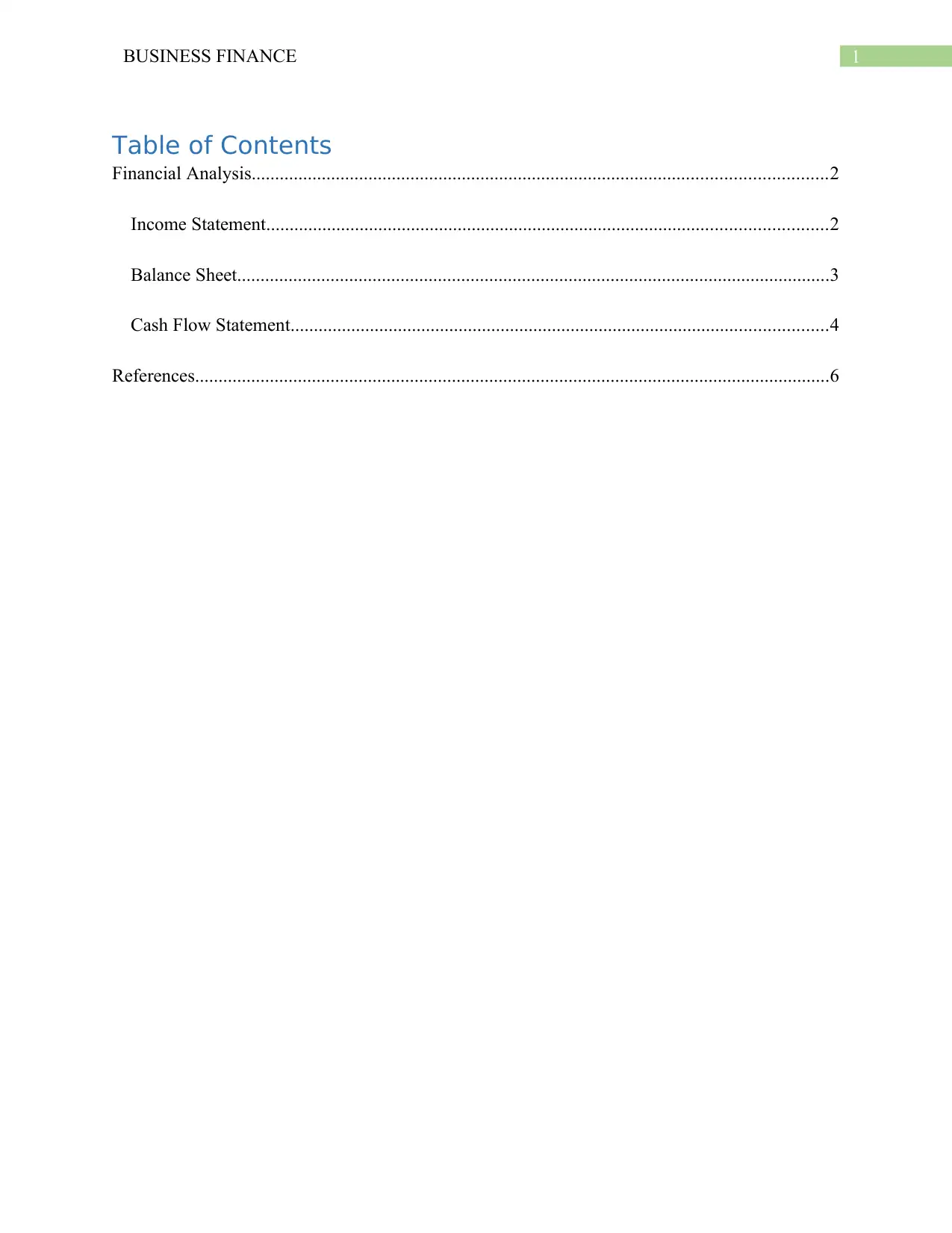
1BUSINESS FINANCE
Table of Contents
Financial Analysis...........................................................................................................................2
Income Statement........................................................................................................................2
Balance Sheet...............................................................................................................................3
Cash Flow Statement...................................................................................................................4
References........................................................................................................................................6
Table of Contents
Financial Analysis...........................................................................................................................2
Income Statement........................................................................................................................2
Balance Sheet...............................................................................................................................3
Cash Flow Statement...................................................................................................................4
References........................................................................................................................................6
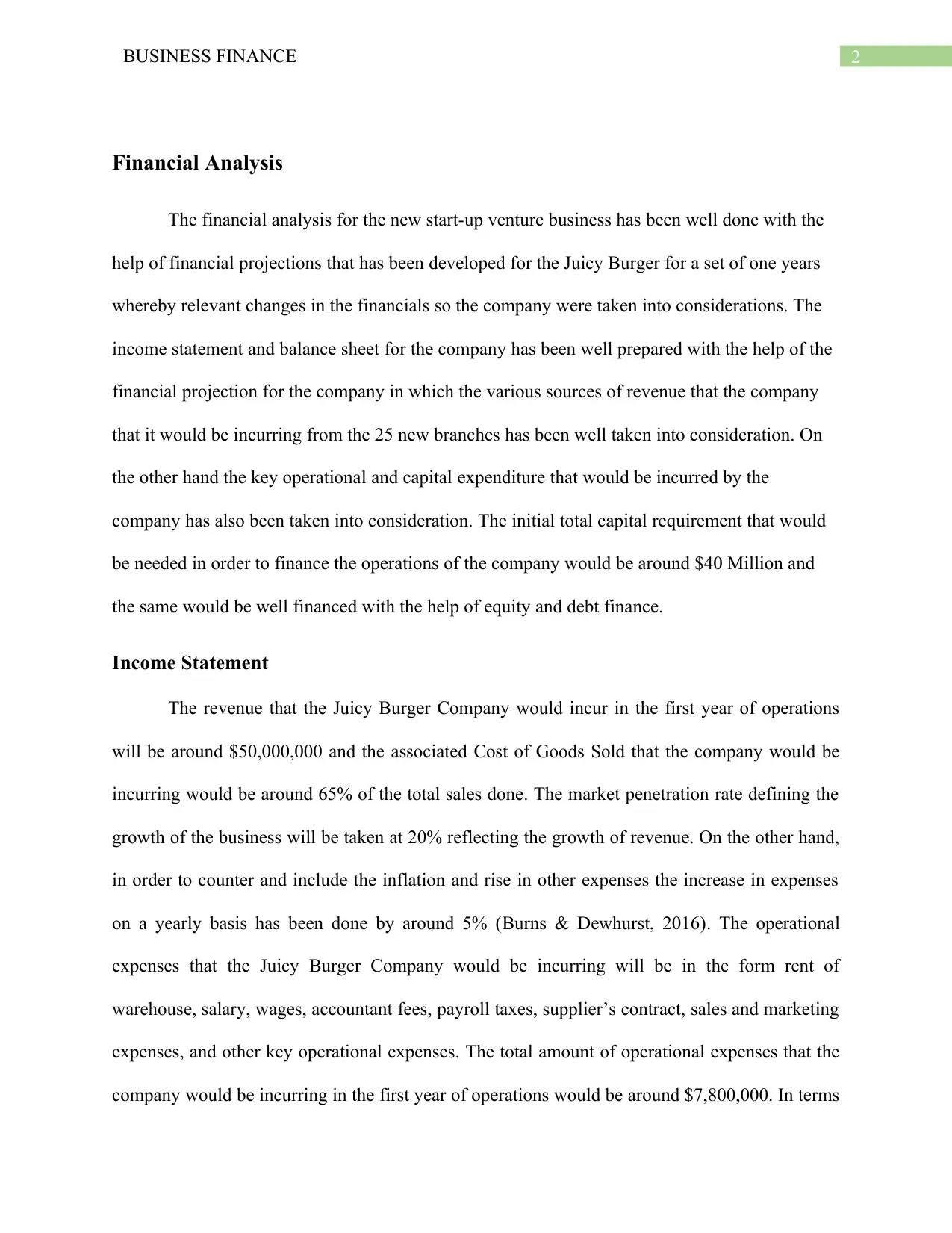
2BUSINESS FINANCE
Financial Analysis
The financial analysis for the new start-up venture business has been well done with the
help of financial projections that has been developed for the Juicy Burger for a set of one years
whereby relevant changes in the financials so the company were taken into considerations. The
income statement and balance sheet for the company has been well prepared with the help of the
financial projection for the company in which the various sources of revenue that the company
that it would be incurring from the 25 new branches has been well taken into consideration. On
the other hand the key operational and capital expenditure that would be incurred by the
company has also been taken into consideration. The initial total capital requirement that would
be needed in order to finance the operations of the company would be around $40 Million and
the same would be well financed with the help of equity and debt finance.
Income Statement
The revenue that the Juicy Burger Company would incur in the first year of operations
will be around $50,000,000 and the associated Cost of Goods Sold that the company would be
incurring would be around 65% of the total sales done. The market penetration rate defining the
growth of the business will be taken at 20% reflecting the growth of revenue. On the other hand,
in order to counter and include the inflation and rise in other expenses the increase in expenses
on a yearly basis has been done by around 5% (Burns & Dewhurst, 2016). The operational
expenses that the Juicy Burger Company would be incurring will be in the form rent of
warehouse, salary, wages, accountant fees, payroll taxes, supplier’s contract, sales and marketing
expenses, and other key operational expenses. The total amount of operational expenses that the
company would be incurring in the first year of operations would be around $7,800,000. In terms
Financial Analysis
The financial analysis for the new start-up venture business has been well done with the
help of financial projections that has been developed for the Juicy Burger for a set of one years
whereby relevant changes in the financials so the company were taken into considerations. The
income statement and balance sheet for the company has been well prepared with the help of the
financial projection for the company in which the various sources of revenue that the company
that it would be incurring from the 25 new branches has been well taken into consideration. On
the other hand the key operational and capital expenditure that would be incurred by the
company has also been taken into consideration. The initial total capital requirement that would
be needed in order to finance the operations of the company would be around $40 Million and
the same would be well financed with the help of equity and debt finance.
Income Statement
The revenue that the Juicy Burger Company would incur in the first year of operations
will be around $50,000,000 and the associated Cost of Goods Sold that the company would be
incurring would be around 65% of the total sales done. The market penetration rate defining the
growth of the business will be taken at 20% reflecting the growth of revenue. On the other hand,
in order to counter and include the inflation and rise in other expenses the increase in expenses
on a yearly basis has been done by around 5% (Burns & Dewhurst, 2016). The operational
expenses that the Juicy Burger Company would be incurring will be in the form rent of
warehouse, salary, wages, accountant fees, payroll taxes, supplier’s contract, sales and marketing
expenses, and other key operational expenses. The total amount of operational expenses that the
company would be incurring in the first year of operations would be around $7,800,000. In terms
⊘ This is a preview!⊘
Do you want full access?
Subscribe today to unlock all pages.

Trusted by 1+ million students worldwide
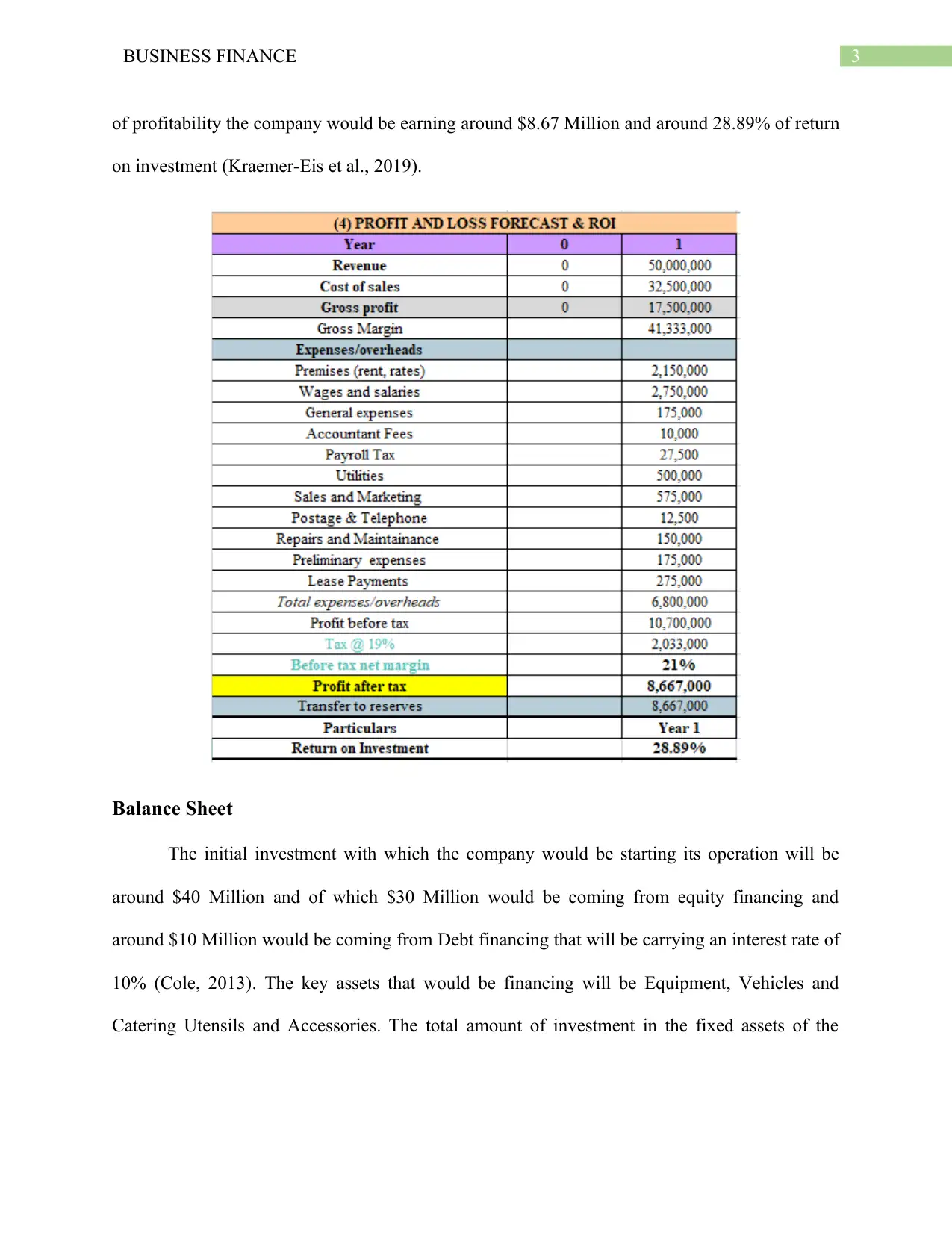
3BUSINESS FINANCE
of profitability the company would be earning around $8.67 Million and around 28.89% of return
on investment (Kraemer-Eis et al., 2019).
Balance Sheet
The initial investment with which the company would be starting its operation will be
around $40 Million and of which $30 Million would be coming from equity financing and
around $10 Million would be coming from Debt financing that will be carrying an interest rate of
10% (Cole, 2013). The key assets that would be financing will be Equipment, Vehicles and
Catering Utensils and Accessories. The total amount of investment in the fixed assets of the
of profitability the company would be earning around $8.67 Million and around 28.89% of return
on investment (Kraemer-Eis et al., 2019).
Balance Sheet
The initial investment with which the company would be starting its operation will be
around $40 Million and of which $30 Million would be coming from equity financing and
around $10 Million would be coming from Debt financing that will be carrying an interest rate of
10% (Cole, 2013). The key assets that would be financing will be Equipment, Vehicles and
Catering Utensils and Accessories. The total amount of investment in the fixed assets of the
Paraphrase This Document
Need a fresh take? Get an instant paraphrase of this document with our AI Paraphraser
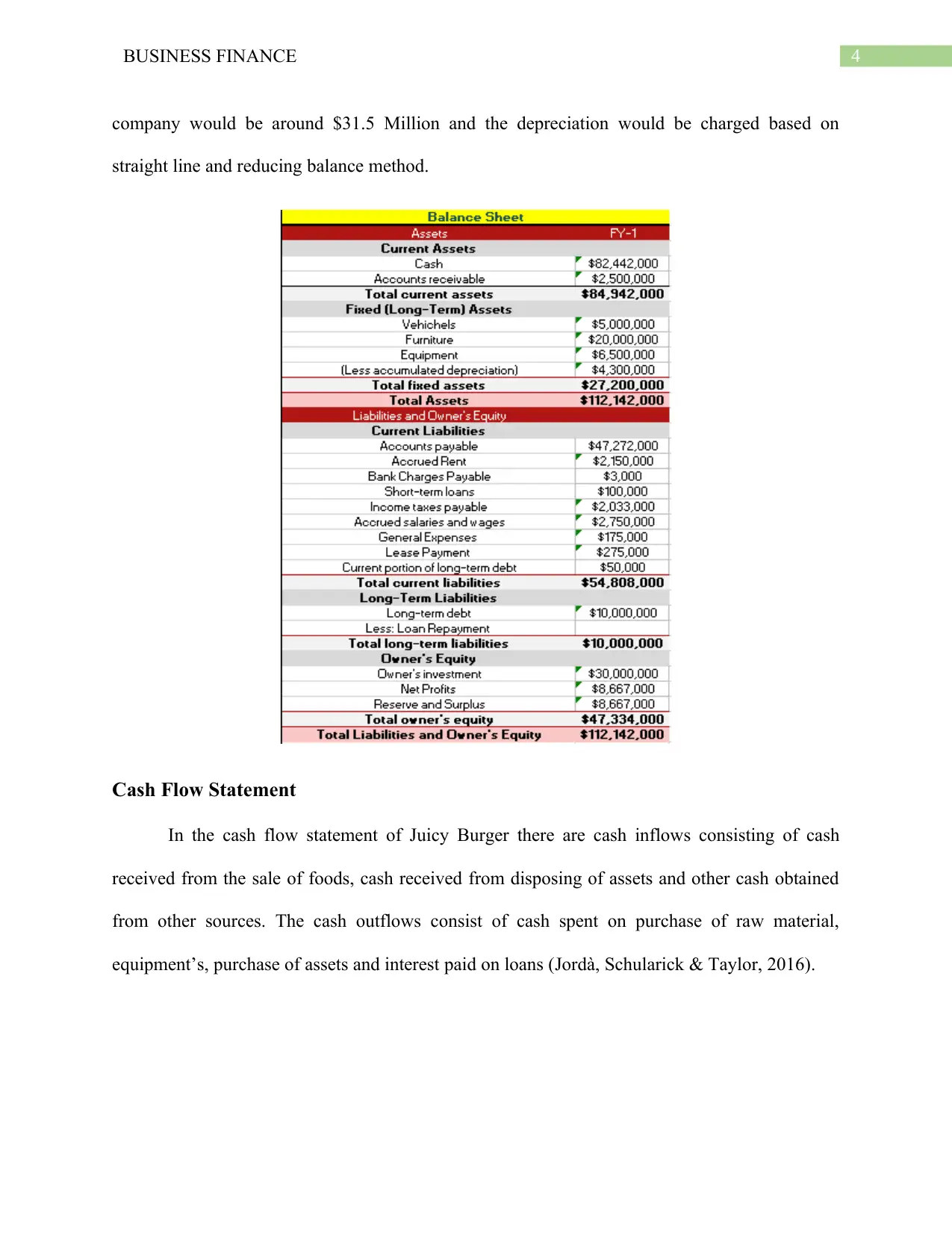
4BUSINESS FINANCE
company would be around $31.5 Million and the depreciation would be charged based on
straight line and reducing balance method.
Cash Flow Statement
In the cash flow statement of Juicy Burger there are cash inflows consisting of cash
received from the sale of foods, cash received from disposing of assets and other cash obtained
from other sources. The cash outflows consist of cash spent on purchase of raw material,
equipment’s, purchase of assets and interest paid on loans (Jordà, Schularick & Taylor, 2016).
company would be around $31.5 Million and the depreciation would be charged based on
straight line and reducing balance method.
Cash Flow Statement
In the cash flow statement of Juicy Burger there are cash inflows consisting of cash
received from the sale of foods, cash received from disposing of assets and other cash obtained
from other sources. The cash outflows consist of cash spent on purchase of raw material,
equipment’s, purchase of assets and interest paid on loans (Jordà, Schularick & Taylor, 2016).
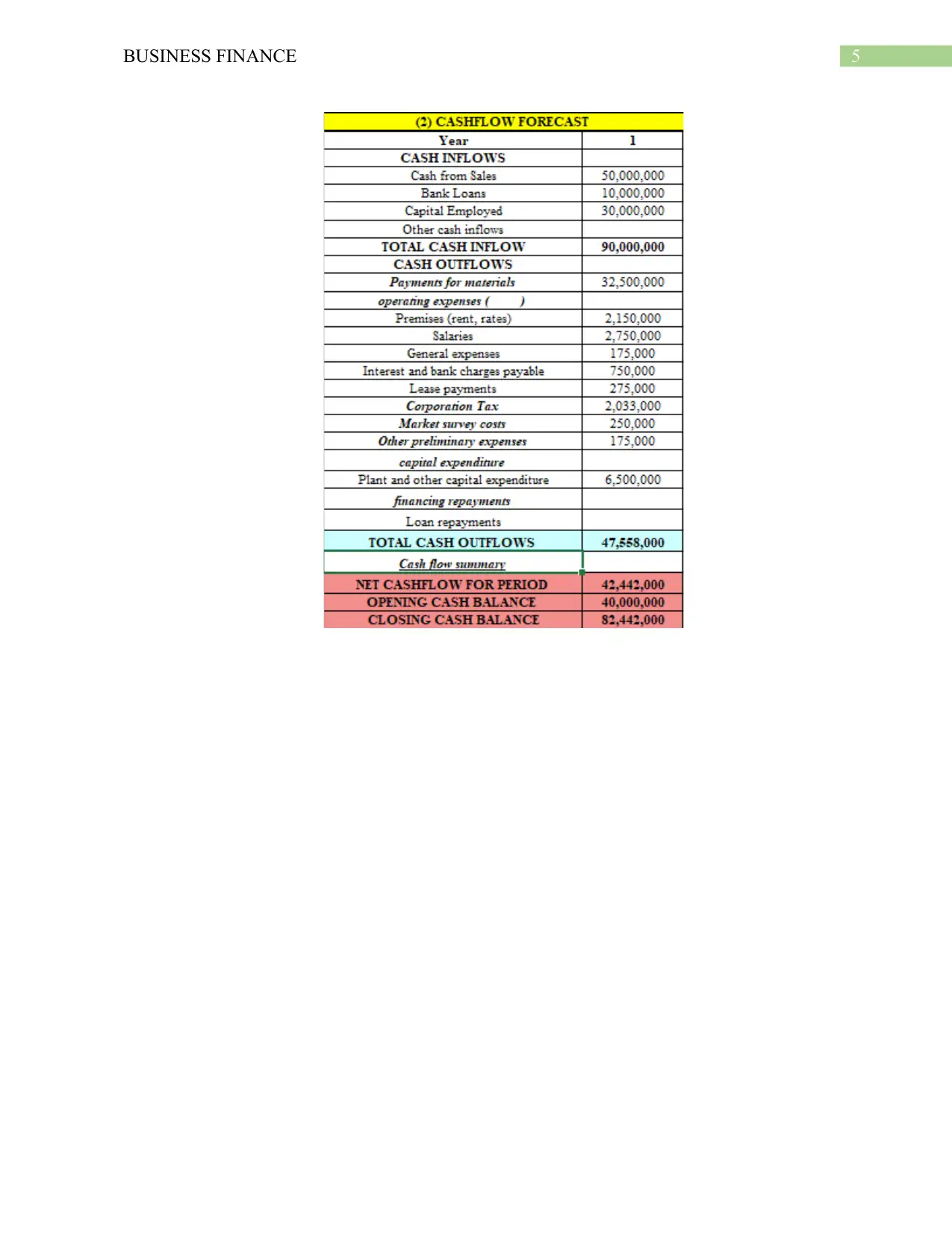
5BUSINESS FINANCE
⊘ This is a preview!⊘
Do you want full access?
Subscribe today to unlock all pages.

Trusted by 1+ million students worldwide
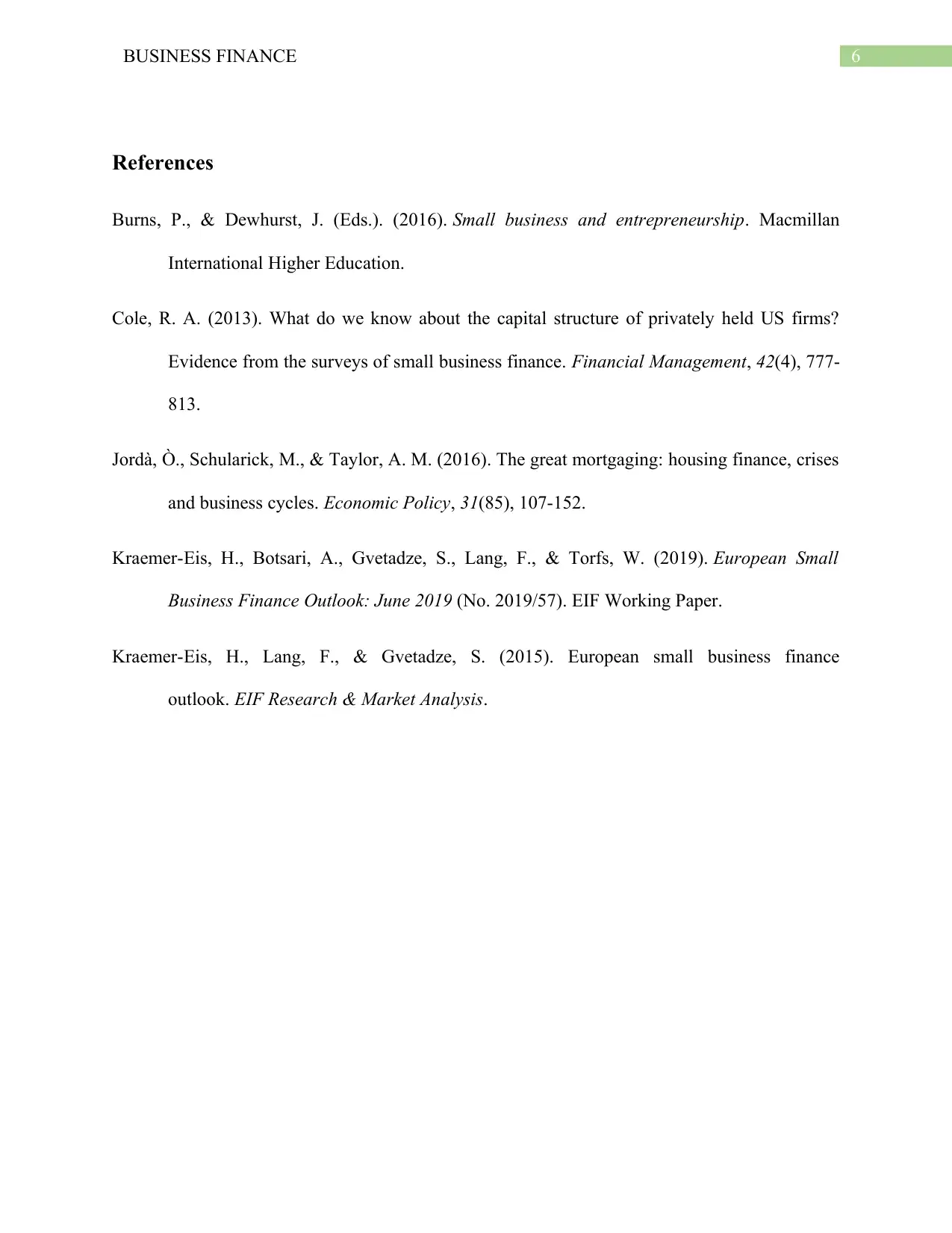
6BUSINESS FINANCE
References
Burns, P., & Dewhurst, J. (Eds.). (2016). Small business and entrepreneurship. Macmillan
International Higher Education.
Cole, R. A. (2013). What do we know about the capital structure of privately held US firms?
Evidence from the surveys of small business finance. Financial Management, 42(4), 777-
813.
Jordà, Ò., Schularick, M., & Taylor, A. M. (2016). The great mortgaging: housing finance, crises
and business cycles. Economic Policy, 31(85), 107-152.
Kraemer-Eis, H., Botsari, A., Gvetadze, S., Lang, F., & Torfs, W. (2019). European Small
Business Finance Outlook: June 2019 (No. 2019/57). EIF Working Paper.
Kraemer-Eis, H., Lang, F., & Gvetadze, S. (2015). European small business finance
outlook. EIF Research & Market Analysis.
References
Burns, P., & Dewhurst, J. (Eds.). (2016). Small business and entrepreneurship. Macmillan
International Higher Education.
Cole, R. A. (2013). What do we know about the capital structure of privately held US firms?
Evidence from the surveys of small business finance. Financial Management, 42(4), 777-
813.
Jordà, Ò., Schularick, M., & Taylor, A. M. (2016). The great mortgaging: housing finance, crises
and business cycles. Economic Policy, 31(85), 107-152.
Kraemer-Eis, H., Botsari, A., Gvetadze, S., Lang, F., & Torfs, W. (2019). European Small
Business Finance Outlook: June 2019 (No. 2019/57). EIF Working Paper.
Kraemer-Eis, H., Lang, F., & Gvetadze, S. (2015). European small business finance
outlook. EIF Research & Market Analysis.
1 out of 7
Related Documents
Your All-in-One AI-Powered Toolkit for Academic Success.
+13062052269
info@desklib.com
Available 24*7 on WhatsApp / Email
![[object Object]](/_next/static/media/star-bottom.7253800d.svg)
Unlock your academic potential
Copyright © 2020–2025 A2Z Services. All Rights Reserved. Developed and managed by ZUCOL.





